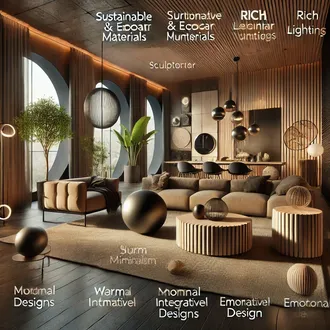Transcription Lighting design
To ensure that the lighting of a room meets the required technical and aesthetic requirements, the decorator must begin by carrying out a good planning or design of the lighting, which will help him to materialize his decorative idea.
In this presentation we offer a series of parameters that must be taken into account to achieve a good light distribution with low glare levels that allow users to satisfy their visual needs and enjoy safe and pleasant environments.
Parameters to be taken into account to obtain a good light distribution in interior spaces
- The activities that will be developed in the enclosure: Depending on this, the general lighting level will be established and it will be determined if it is necessary to use different lighting systems or zones. For example, in a kitchen, it may be necessary to implement one or more areas of spot lighting.
- The sources of natural light: In order to reduce energy costs and extend the life of the luminaires, the decorator should recommend the use of spot lighting on some areas of the room that are poorly lit during the day, so that it is not necessary to turn on the general lighting that is used during the night.
- The dimensions and shapes of the room: The main dimensions of the space and its shapes should be taken into account when selecting the type of luminaire to be used. For example: in rooms with sloping ceilings or rooms with arched or domed ceilings, the use of pendant luminaires is recommended, so that it is easier to achieve a luminous balance throughout the space.
- The degree of luminosity of large surfaces: The degree of luminosity, as we have already seen in this course, is the part of the luminous energy that is reflected on the illuminated surface; it depends on the color, the tone and the texture of the illuminated surface. This parameter should be considered especially when one of the main surfaces is covered by a permanent decorative element (wood, marble, ceramic, etc.) whose color, tone or texture can significantly reduce or amplify the luminosity.
- The height at which the work surfaces are located: It is necessary to specify the height at which the planes are located where activities that require a specific level of illumination are carried out within the premises; in order to determine the place, the type of luminaire, and the luminous intensity of the source to be used. For example: we must know the height of the bar in the kitchen to illuminate it adequately.
- The arrangement of the luminaires: The exact places where the lighting fixtures will be installed must be indicated, as well as the type and place where the switches will be installed. For their location the designer will take into account the position of other openings; for example, those corresponding to doorbells, loudspeakers, smoke detectors, air vents, etcetera. Perfectly placed light fixtures help to accentuate the architectural and aesthetic details of the room.
- The types of luminaires: Depending on the source-luminaire sets used, the decorator can make the artificial light fulfill a specific function: general, punctual, ambient or decorative. To select them, the characteristics of the luminous flux they emit, the mounting possibilities and the polar diagram of the light distribution provided by the manufacturer must be taken into account.
- The maintenance conditions required by the luminaires: The decorator must take into account whether the luminaires will come into contact with any element that could increase the dirt and deterioration of the luminaires in order to recommend cleaning and maintenance measures.
luz diseno




